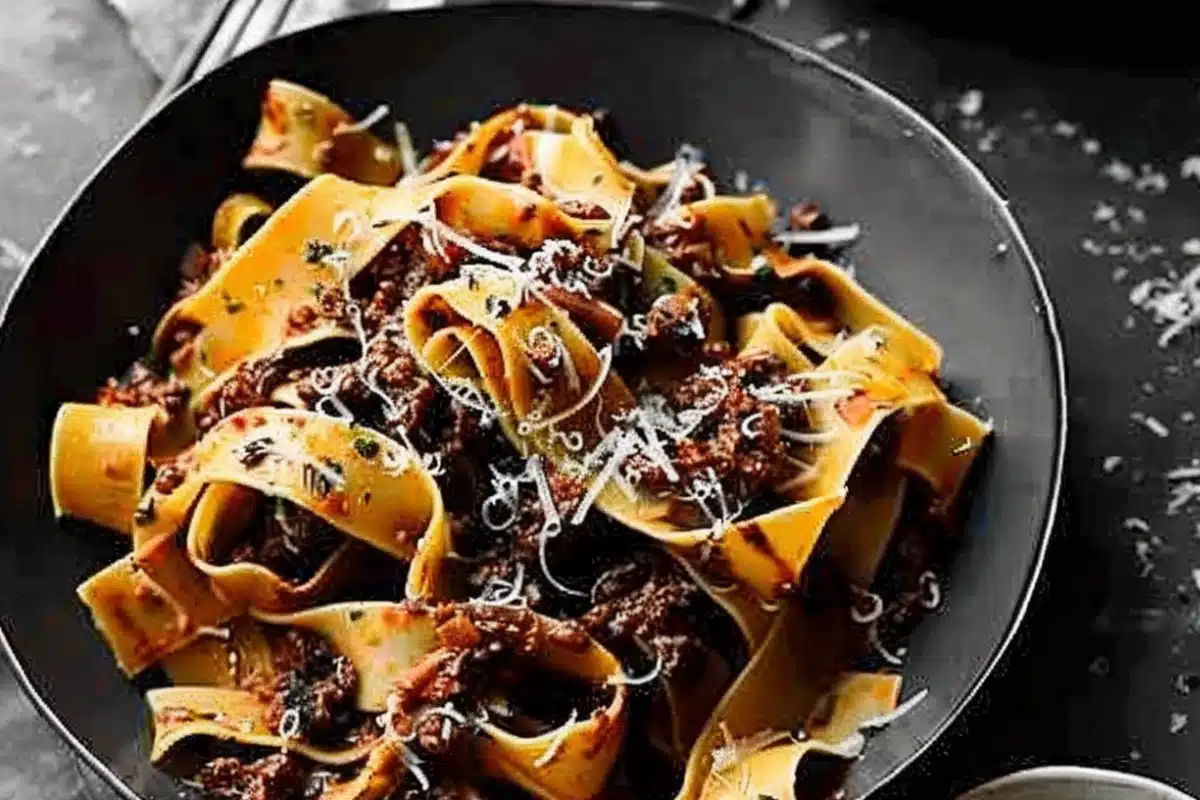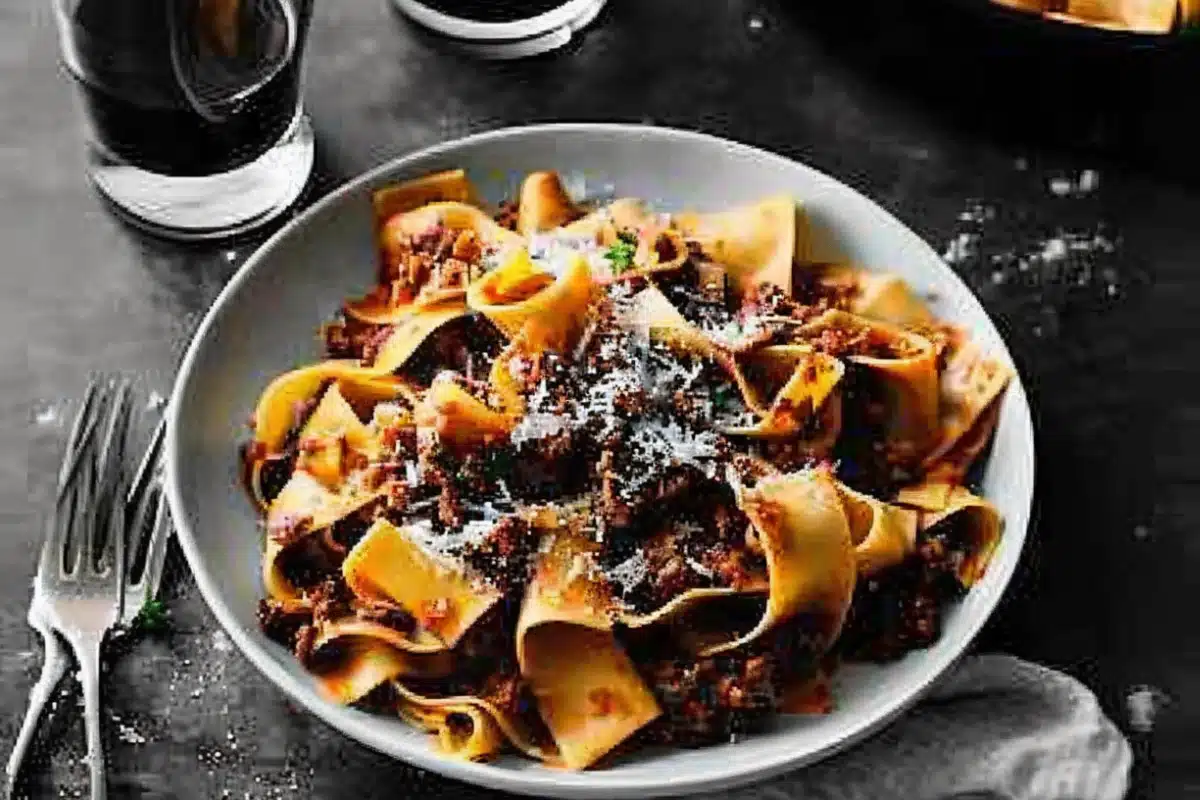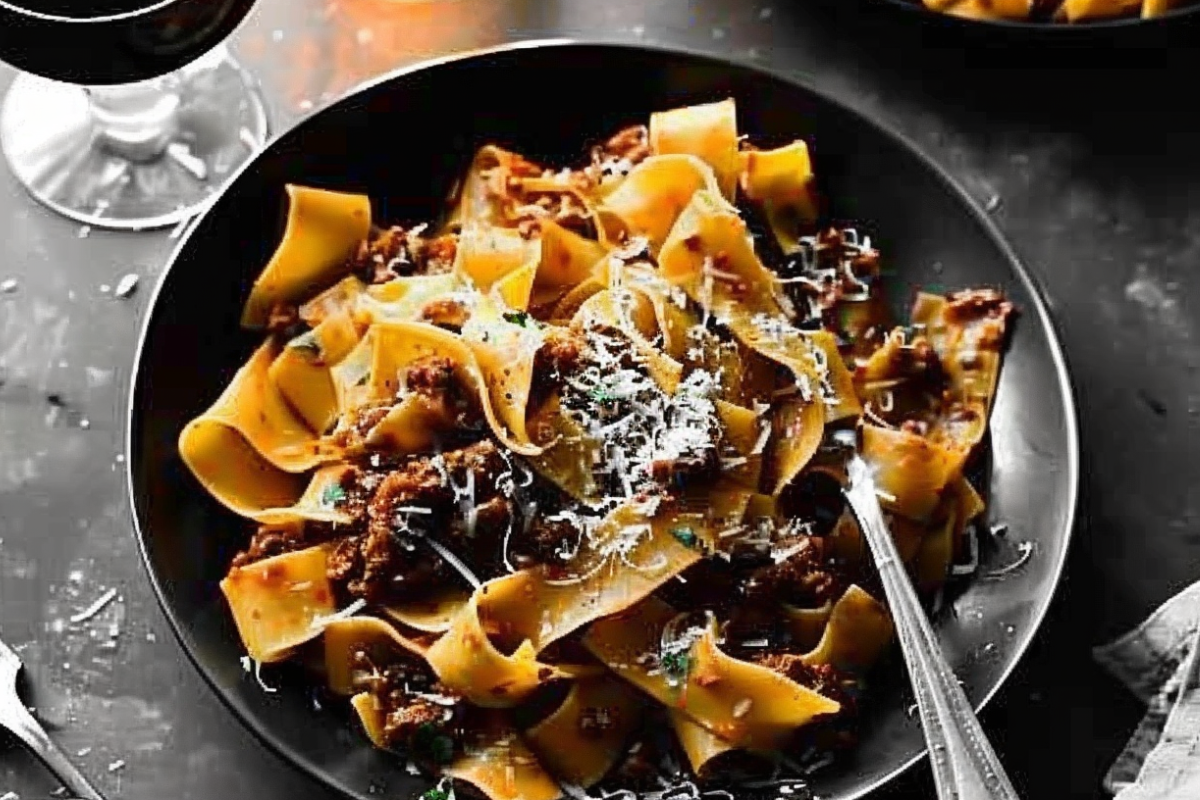If you’re a pasta enthusiast, you’ve probably encountered pappardelle at some point in your culinary adventures. Pappardelle, with its wide, ribbon-like shape, is renowned for its versatility, texture, and ability to hold up well with robust, flavorful sauces. Originating from the heart of Italy, this pasta variety is a favorite in both traditional and contemporary kitchens. In this comprehensive guide, we will explore the history, characteristics, and uses of pappardelle, as well as the best sauces and techniques for cooking it.
History and Origins of Pappardelle Pasta
Pappardelle has deep roots in the culinary traditions of Tuscany, Italy. Its name is derived from the Italian verb “pappare,” meaning “to gobble up,” an apt description for this pasta, which pairs wonderfully with hearty sauces that you’ll want to savor. First appearing in Italian cuisine around the 14th century, pappardelle was designed to complement Tuscany’s famous rich and meaty sauces, particularly those made from game meat like wild boar.
Tuscany, known for its rustic and flavorful dishes, created pappardelle as the ideal accompaniment for ragùs and stews. The pasta’s broad surface area allowed it to soak up sauces, creating a mouthwatering balance of pasta and flavor in every bite. While originally a staple of Tuscan kitchens, pappardelle has since spread beyond Italy, earning a place in the hearts of pasta lovers around the world. From humble beginnings to global recognition, pappardelle has become synonymous with satisfying, delicious meals.
Today, pappardelle remains a beloved pasta type, especially in dishes that call for bold flavors and hearty ingredients. Its legacy as a key component of Tuscan cuisine is celebrated in both traditional Italian restaurants and modern fusion kitchens.
What is Pappardelle Pasta?
Pappardelle is a wide, flat pasta, typically between 2 to 3 centimeters in width, making it one of the broadest ribbon-shaped pastas in the world of Italian cuisine. Its thickness and width make it robust enough to hold up under the weight of thick, chunky sauces, which makes it an ideal choice for rich, meaty dishes.
Traditional pappardelle is made from simple ingredients: flour and eggs. The combination of these ingredients creates a pasta with a slightly chewy texture, which enhances its ability to hold onto sauce. This pasta’s surface is often rougher than other pasta varieties, allowing it to grip sauces more effectively, resulting in a perfect bite each time.
Though it’s commonly found in dishes with meat-based sauces, pappardelle is also versatile enough to be paired with vegetarian sauces, seafood, and even contemporary fusion recipes. Whether you’re a home cook or a seasoned chef, pappardelle is a pasta that invites creativity while maintaining its rich, traditional roots.
Pappardelle vs. Tagliatelle: Differences Between the Two Pastas
Pappardelle and tagliatelle are both ribbon-like pastas that share some similarities in terms of their shape and the dishes they are used in. However, they have key differences that make them unique.
| Feature | Pappardelle | Tagliatelle |
|---|---|---|
| Width | 2-3 cm | 6-8 mm |
| Origin | Tuscany | Emilia-Romagna |
| Best Pairing | Heavier, meaty sauces | Lighter sauces |
| Texture | Rougher surface | Smoother surface |
Pappardelle is wider than tagliatelle, which makes it more suited to heavy, chunky sauces like ragù. Tagliatelle, originating from Emilia-Romagna, is narrower and typically paired with lighter sauces such as Alfredo or simple tomato-based sauces. Both are egg-based pastas, but pappardelle’s broad ribbons make it the better choice for carrying thick, rich sauces.

How to Make Fresh Pappardelle Pasta at Home
Making fresh pappardelle pasta at home can be a fun and rewarding experience. With just a few simple ingredients, you can create this traditional pasta from scratch. Here’s a step-by-step guide to help you make your own pappardelle:
Ingredients:
- 2 cups all-purpose flour
- 3 large eggs
- A pinch of salt
- A splash of olive oil (optional)
Directions:
- Prepare the Dough:
Begin by creating a mound of flour on a clean surface. Make a well in the center and crack the eggs into it. Add a pinch of salt and a splash of olive oil if you prefer a softer dough. - Mix and Knead:
Gradually mix the flour into the eggs, pulling in small amounts of flour from the edges of the well. Continue until the mixture forms a dough. Knead the dough for about 10 minutes, until it becomes smooth and elastic. If the dough feels too sticky, add a bit more flour. - Rest the Dough:
Cover the dough with a damp cloth and let it rest for at least 30 minutes. This resting period allows the gluten in the dough to relax, making it easier to roll out. - Roll Out the Dough:
After the dough has rested, use a rolling pin or pasta machine to roll it out on a floured surface. Roll it as thin as possible, ideally until you can almost see through it. - Cut the Pappardelle:
Use a sharp knife or a pasta cutter to cut the dough into wide ribbons, approximately 2-3 cm in width. - Cook the Pappardelle:
Fresh pappardelle cooks quickly, usually in just 3-4 minutes in boiling salted water. Be sure to keep an eye on it, as fresh pasta is more delicate than dried varieties.
Traditional and Modern Pappardelle Pasta Dishes
One of the reasons pappardelle is so loved is its versatility. From traditional Tuscan dishes to more modern and creative recipes, pappardelle can be used in various ways.
Classic Pappardelle Dishes:
- Pappardelle with Wild Boar Ragù:
A Tuscan classic, wild boar ragù is rich, gamey, and perfectly paired with the wide ribbons of pappardelle. - Pappardelle with Bolognese Sauce:
A heartwarming dish, pappardelle with Bolognese sauce is a favorite for many pasta lovers. The thick meat sauce coats the broad pasta perfectly, making it an ideal comfort food.
Modern and Fusion Pappardelle Dishes:
- Vegetarian Pappardelle with Mushrooms and Truffle Oil:
A modern, vegetarian take on pappardelle, this dish brings together earthy mushrooms and luxurious truffle oil for a sophisticated meal. - Seafood Pappardelle with Shrimp and Lemon:
A lighter, refreshing dish, this recipe features pappardelle paired with shrimp, lemon zest, and fresh herbs for a bright and flavorful meal.
Pappardelle can be adapted to both classic Italian recipes and more experimental, modern flavors. Its wide surface area and satisfying texture allow it to carry a range of ingredients and sauces, making it a versatile addition to any kitchen.
Best Sauces to Pair with Pappardelle Pasta
The wide, flat ribbons of pappardelle are perfect for holding hearty sauces. Here are some of the best sauce pairings for this pasta:
Hearty Meat Sauces:
- Beef Ragù:
The richness of a beef ragù is the perfect complement to pappardelle’s broad ribbons, with the sauce clinging to every bite. - Lamb Sauce:
A slightly gamey lamb sauce pairs beautifully with pappardelle, offering a robust and flavorful meal.
Creamy Sauces:
- Alfredo Sauce:
Creamy and decadent, Alfredo sauce coats pappardelle evenly, creating a comforting and luxurious dish. - Carbonara:
Although traditionally served with thinner pasta, carbonara takes on a new twist when paired with pappardelle, offering a more substantial bite.
Tomato-Based Sauces:
- Marinara Sauce:
For a lighter option, marinara sauce is a great pairing. The acidity of the tomatoes balances well with the richness of the egg-based pasta. - Arrabbiata Sauce:
If you enjoy a bit of heat, arrabbiata’s spicy kick enhances the mild flavor of pappardelle perfectly.
Tips for Cooking Pappardelle Pasta Perfectly
Cooking pappardelle to perfection requires a few key steps to ensure the best texture and flavor. Here are some tips to help you cook this pasta just right:
- Use Plenty of Water:
When boiling pappardelle, use a large pot with plenty of water to prevent the pasta from sticking together. - Stir Often:
Because pappardelle is wide and can stick together easily, make sure to stir the pasta frequently while it’s cooking. - Cook to Al Dente:
Fresh pappardelle only needs 3-4 minutes to cook. Aim for al dente texture—firm to the bite, but not too soft. - Toss with Olive Oil:
After cooking and draining, toss the pasta with a little olive oil to prevent it from sticking as you prepare to mix it with your sauce.
Pappardelle Pasta in Contemporary Cuisine
In contemporary cuisine, pappardelle is no longer limited to traditional Italian dishes. Its broad ribbons and versatile texture have made it a popular choice in fusion recipes, where it’s paired with ingredients and flavors from other cuisines.
One modern fusion dish is pappardelle with coconut curry sauce, blending the richness of Italian pasta with the bold flavors of Thai cuisine. The wide noodles are perfect for soaking up the creamy, spicy curry, creating a dish that’s both comforting and exotic.
Another contemporary take is pappardelle with roasted vegetables, such as butternut squash and sage. This combination brings together seasonal flavors for a hearty vegetarian meal that’s both wholesome and satisfying.
Frequently Asked Questions About Pappardelle Pasta
What sauces go best with pappardelle pasta?
Pappardelle pairs best with hearty, thick sauces like beef ragù, lamb sauce, and Alfredo. The broad surface area holds onto these robust sauces perfectly.
What makes pappardelle different from tagliatelle?
The main difference is in the width. Pappardelle is wider than tagliatelle, making it better suited for heavier sauces, while tagliatelle is typically used with lighter, more delicate sauces.
Can I use pappardelle pasta for baked dishes?
Pappardelle is generally not used in baked dishes, as its wide shape is better suited for being coated in sauce rather than layered.
How long should I cook fresh vs. dried pappardelle?
Fresh pappardelle cooks quickly in about 3-4 minutes. Dried pappardelle takes longer, typically 10-12 minutes, depending on its thickness.
How do I prevent pappardelle from sticking together?
To prevent sticking, use plenty of water when cooking, stir often, and rinse briefly with cold water after draining.
